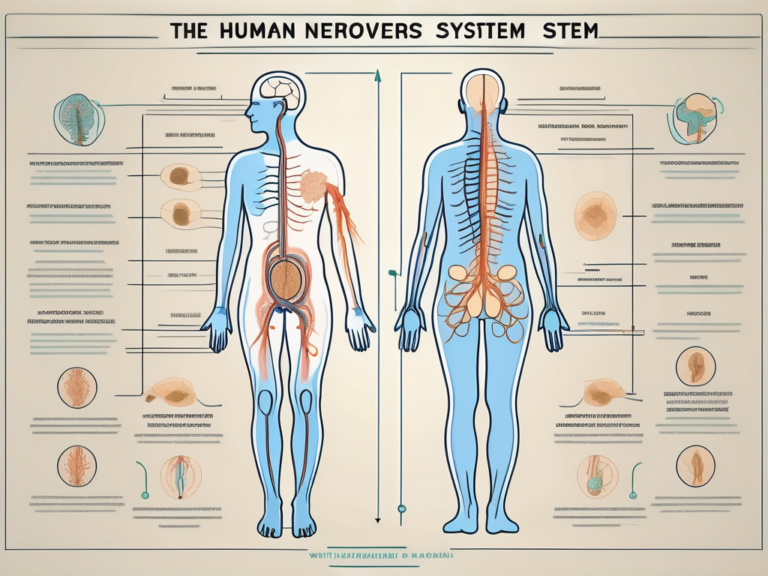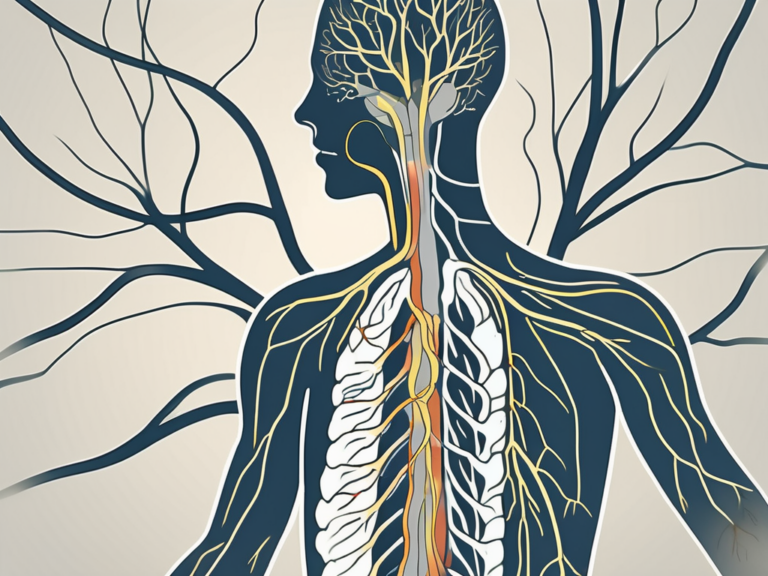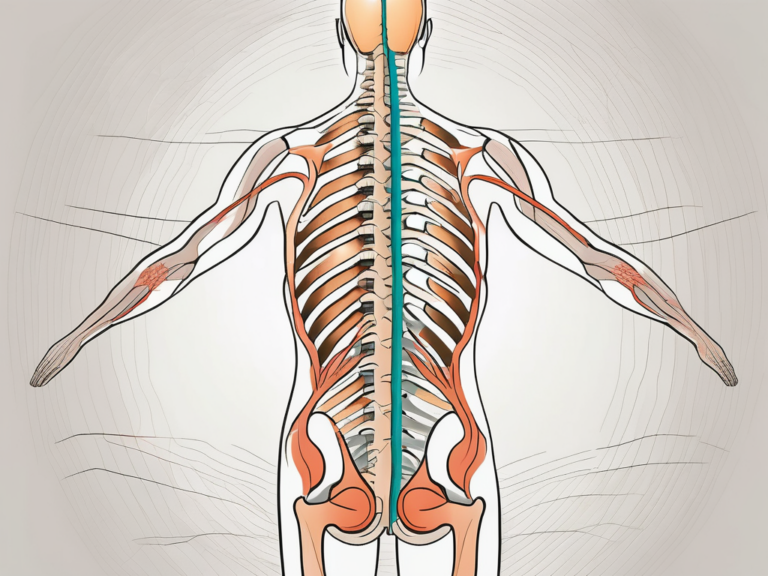What Is a Sacral Nerve Stimulator For?
A sacral nerve stimulator is a medical device used to treat certain conditions by stimulating the sacral nerve. In this article, we will explore the basic concept of sacral nerve stimulation, the role of the sacral nerve in the human body, medical conditions treated with sacral nerve stimulation, the procedure itself, potential risks and complications, the effectiveness of the treatment, and life after sacral nerve stimulation.
Understanding the Sacral Nerve Stimulator
Sacral nerve stimulation is a treatment that involves the use of a device to stimulate the sacral nerve, which is responsible for controlling the bladder, bowel, and pelvic muscles. The stimulation helps regulate the signals between the brain and the bladder or bowel, improving their function and reducing symptoms associated with certain medical conditions.
The sacral nerve, also known as the S3 nerve, plays a crucial role in maintaining the proper functioning of the lower urinary tract and the rectum. It is part of the autonomic nervous system, which controls involuntary bodily functions. When this nerve is not functioning properly, it can lead to conditions such as urinary incontinence, fecal incontinence, and pelvic pain.
The Basic Concept of Sacral Nerve Stimulation
The basic concept of sacral nerve stimulation is to deliver low-level electrical impulses to the sacral nerve, either through an external device or an implanted device. These impulses modulate nerve signals, helping to restore normal function and alleviate symptoms.
By stimulating the sacral nerve, the electrical impulses can help to improve the coordination between the brain and the bladder or bowel. This can result in better control over urination and defecation, reducing the frequency of accidents and improving the overall quality of life for patients.
Components of a Sacral Nerve Stimulator
A sacral nerve stimulator consists of three main components: a generator, a lead, and an electrode. The generator is a small battery-powered device that produces the electrical impulses. It is typically placed under the skin, either in the buttock or in the lower abdomen.
The lead is a thin wire that connects the generator to the electrode, which is placed near the sacral nerve. The electrode is carefully positioned to ensure optimal stimulation of the nerve. It is inserted through a small incision and guided to the correct location using imaging techniques such as fluoroscopy.
The generator can be programmed to deliver electrical impulses at specific frequencies and intensities, tailored to the individual patient’s needs. The device can be adjusted by a healthcare professional to achieve the best possible outcomes for the patient.
Benefits of Sacral Nerve Stimulation
Sacral nerve stimulation has been shown to be an effective treatment option for various conditions, including overactive bladder, urinary retention, fecal incontinence, and chronic pelvic pain. It offers a non-surgical alternative to more invasive procedures, such as bladder augmentation or colostomy.
Furthermore, sacral nerve stimulation is reversible and adjustable. If the treatment does not provide the desired results or if the patient experiences any adverse effects, the device can be turned off or removed. This flexibility allows for personalized treatment plans and ensures that patients have control over their own healthcare decisions.
In conclusion, sacral nerve stimulation is a promising treatment option for individuals suffering from bladder and bowel dysfunction. By delivering electrical impulses to the sacral nerve, this therapy helps restore normal function and improve the quality of life for patients. With ongoing advancements in technology and research, sacral nerve stimulation continues to evolve, offering hope for those in need of effective and minimally invasive treatment options.
The Role of Sacral Nerve in the Human Body
The sacral nerve is a part of the nervous system that plays a crucial role in the control of bladder and bowel function, as well as the coordination of pelvic floor muscles. It carries signals between the brain, bladder, bowel, and pelvic muscles, enabling proper function and coordination.
The sacral nerve is a complex network of nerves that originates from the spinal cord in the lower back. It is composed of multiple nerve roots that come together to form a bundle. These nerve roots emerge from the spinal cord and travel through the sacrum, a triangular bone located at the base of the spine.
As the sacral nerve travels through the pelvic region, it branches out to provide innervation to various structures, including the bladder, bowel, and pelvic muscles. These branches ensure that the signals from the brain reach their intended destinations, allowing for the proper functioning of these organs and muscles.
Anatomy of the Sacral Nerve
The sacral nerve is a bundle of nerves that originates from the spinal cord in the lower back. It runs through the pelvic region, branching out to provide innervation to the bladder, bowel, and pelvic muscles.
The sacral nerve is composed of several individual nerve roots, each originating from the spinal cord. These nerve roots exit the spinal cord through small openings in the vertebrae, known as the intervertebral foramina. As they exit the spinal cord, these nerve roots come together to form the sacral nerve.
Once formed, the sacral nerve travels through the sacrum, a triangular bone located at the base of the spine. It then continues its course through the pelvic region, giving off branches that supply the bladder, bowel, and pelvic muscles.
Functions of the Sacral Nerve
The sacral nerve is responsible for controlling the contraction and relaxation of the bladder, as well as the coordination of bowel movements. It also plays a crucial role in the control and coordination of pelvic floor muscles, which are important for urinary and fecal continence.
When the bladder is full, the sacral nerve receives signals from the brain indicating the need to urinate. It then sends signals to the bladder muscles, causing them to contract and expel urine. Similarly, when the bowel needs to empty, the sacral nerve coordinates the relaxation of the anal sphincter muscles, allowing for smooth bowel movements.
In addition to its role in bladder and bowel control, the sacral nerve is also involved in the coordination of pelvic floor muscles. These muscles support the pelvic organs, including the bladder, uterus, and rectum. The sacral nerve ensures that these muscles contract and relax in a coordinated manner, maintaining proper pelvic organ function and preventing issues such as urinary and fecal incontinence.
Furthermore, the sacral nerve is essential for sexual function. It plays a role in the regulation of sexual arousal and orgasm, as well as the coordination of pelvic floor muscles during sexual activity.
In summary, the sacral nerve is a vital component of the nervous system, responsible for the control and coordination of bladder and bowel function, as well as the coordination of pelvic floor muscles. Its intricate anatomy and functions ensure the proper functioning of these essential bodily processes, contributing to overall health and well-being.
Medical Conditions Treated with Sacral Nerve Stimulation
Sacral nerve stimulation is a highly effective treatment option for several medical conditions that affect bladder and bowel function, as well as chronic pain. This innovative therapy has shown promising results in improving the quality of life for many individuals. However, it is crucial to consult with a knowledgeable healthcare professional to determine if sacral nerve stimulation is the right option for you.
Overactive Bladder and Sacral Nerve Stimulation
Overactive bladder is a distressing condition characterized by frequent, urgent, and sometimes uncontrollable urination. It can significantly impact an individual’s daily activities and overall well-being. Sacral nerve stimulation offers hope for those suffering from this condition by helping to regulate the signals between the bladder and the brain.
Through the use of a small device implanted near the sacral nerves, electrical impulses are delivered to the nerves responsible for bladder control. These impulses help to modulate the nerve activity, reducing urinary urgency and frequency. In addition, sacral nerve stimulation may improve bladder control and decrease episodes of incontinence, allowing individuals to regain control over their bladder function.
Chronic Pain Management through Sacral Nerve Stimulation
Chronic pain conditions can have a debilitating impact on a person’s life, making even simple tasks seem insurmountable. Sacral nerve stimulation has emerged as a promising treatment option for individuals suffering from chronic pain conditions, such as chronic pelvic pain, interstitial cystitis, and pudendal neuralgia.
By delivering mild electrical pulses to the sacral nerves, sacral nerve stimulation can help modulate the pain signals transmitted to the brain. This modulation can provide significant relief for individuals experiencing chronic pain, allowing them to regain control and improve their overall quality of life.
It is important to note that sacral nerve stimulation is not a cure for these chronic pain conditions. However, it can offer substantial pain relief and improve daily functioning for many individuals who have not found adequate relief from other treatments.
Furthermore, sacral nerve stimulation is a reversible treatment option. If the therapy does not provide the desired results or if the individual experiences any adverse effects, the device can be easily removed without causing any permanent damage.
In conclusion, sacral nerve stimulation is a valuable treatment option for individuals suffering from overactive bladder and chronic pain conditions. By regulating the signals between the bladder and the brain or modulating pain signals, this therapy can significantly improve the quality of life for many individuals. If you are considering sacral nerve stimulation, it is crucial to consult with a healthcare professional who specializes in this treatment to determine if it is the right option for you.
The Procedure of Sacral Nerve Stimulation
The procedure for sacral nerve stimulation involves several steps, from preparation to the actual implantation of the device. It is important to discuss the details with your doctor and understand what to expect.
Preparing for the Procedure
Prior to the procedure, your doctor will perform a thorough evaluation to determine if sacral nerve stimulation is appropriate for you. This evaluation may include diagnostic tests, such as urodynamic testing, to assess your bladder function and identify potential underlying issues.
During the evaluation, your doctor will explain the benefits and potential risks of the procedure. They will also discuss alternative treatment options and answer any questions or concerns you may have. It is important to have a clear understanding of the procedure and its potential outcomes before making a decision.
If sacral nerve stimulation is deemed suitable for you, your doctor will provide instructions on how to prepare for the procedure. This may include guidelines on fasting before the surgery, stopping certain medications, and arranging for transportation to and from the hospital.
What Happens During the Procedure?
The procedure is typically performed under anesthesia to ensure your comfort throughout the process. Your doctor will make a small incision in the upper buttock area to create a pocket for the generator. The incision site will be carefully chosen to minimize scarring and maximize the effectiveness of the device.
Once the incision is made, your doctor will insert the lead near the sacral nerve. This can be done through a small incision or using a minimally invasive technique, depending on your specific case. The placement of the lead is crucial, as it needs to be in close proximity to the sacral nerve to effectively stimulate it.
After the lead is in place, the electrode will be connected to it. This electrode is responsible for delivering the electrical impulses to the sacral nerve, which helps regulate bladder function. The connection between the lead and the electrode is carefully secured to ensure proper functioning of the device.
Once the lead and electrode are in place, your doctor will close the incisions using sutures or surgical staples. They will apply sterile dressings to protect the incision sites and promote healing. In some cases, a temporary external device may be used before the permanent implantation to assess the effectiveness of sacral nerve stimulation in managing your symptoms.
After the procedure, you will be taken to a recovery area where medical staff will monitor your vital signs and ensure your comfort. Depending on the specific instructions from your doctor, you may be able to go home the same day or stay overnight for observation.
It is important to follow your doctor’s post-operative instructions carefully to promote proper healing and optimize the benefits of sacral nerve stimulation. This may include restrictions on physical activity, wound care guidelines, and follow-up appointments to monitor your progress.
Remember, sacral nerve stimulation is a specialized procedure that requires the expertise of a trained healthcare professional. If you have any questions or concerns about the procedure, do not hesitate to reach out to your doctor for clarification and guidance.
Potential Risks and Complications of Sacral Nerve Stimulation
As with any medical procedure, sacral nerve stimulation comes with potential risks and complications. It is essential to understand these risks and discuss them with your doctor before making a decision.
Short-term Risks
Short-term risks may include infection, pain or discomfort at the incision site, bleeding, or device-related complications. Your doctor will provide you with specific instructions to minimize the risk of infection and other potential complications.
Long-term Complications
While sacral nerve stimulation is generally considered safe, there are potential long-term complications, such as lead displacement, electrode migration, or battery-related issues. Regular follow-up visits with your doctor are important to monitor the functioning of the device and address any potential complications.
The Effectiveness of Sacral Nerve Stimulation
Sacral nerve stimulation has been shown to be effective in improving symptoms and quality of life for many individuals. However, it is important to note that the effectiveness of the treatment can vary among individuals and depend on various factors.
Success Rates of Sacral Nerve Stimulation
Studies have shown that sacral nerve stimulation can significantly reduce urinary urgency, frequency, and incontinence episodes in individuals with overactive bladder. It can also provide pain relief for those suffering from chronic pelvic pain conditions. However, individual results may vary, and it is important to have realistic expectations.
Factors Influencing the Effectiveness of the Procedure
Several factors can influence the effectiveness of sacral nerve stimulation, including the underlying condition being treated, the individual’s overall health, their response to the stimulation, and adherence to post-procedure care and lifestyle changes. Discussing these factors with your doctor is crucial to getting the most out of the treatment.
Life After Sacral Nerve Stimulation
After undergoing sacral nerve stimulation, there are certain considerations and lifestyle changes to optimize the benefits of the treatment and maintain long-term success.
Post-procedure Care and Maintenance
Your doctor will provide specific instructions for post-procedure care and maintenance of the device. This may include avoiding certain activities or positions that could potentially damage the device, regular follow-up visits to monitor its functioning, and making adjustments to the stimulation settings if needed.
Lifestyle Changes After the Procedure
Sacral nerve stimulation is not a standalone solution. It should be combined with lifestyle changes, such as maintaining a healthy weight, avoiding bladder irritants, practicing good bowel habits, and incorporating pelvic floor exercises into your routine. These lifestyle changes can help maximize the benefits of the treatment and improve overall bladder and bowel function.
In conclusion, sacral nerve stimulation is a medical treatment used to improve bladder and bowel function, as well as manage chronic pain conditions. It involves the use of a device that stimulates the sacral nerve, helping regulate the signals between the brain and the bladder or bowel. While it can be an effective treatment option for many individuals, it is important to consult with a doctor to determine if it is suitable for your specific condition.





